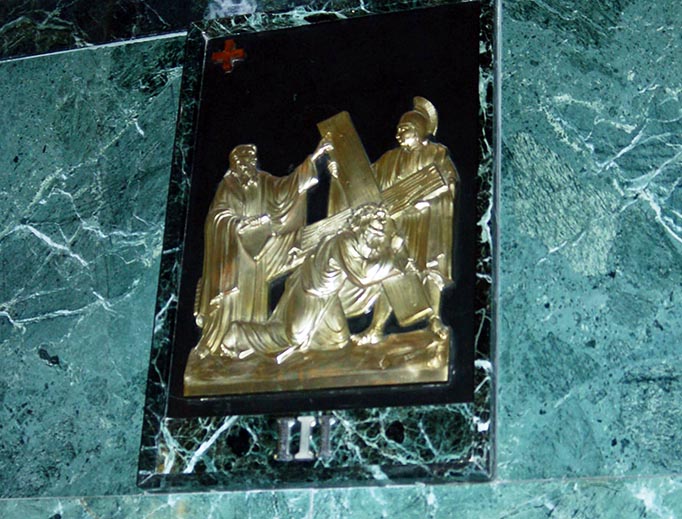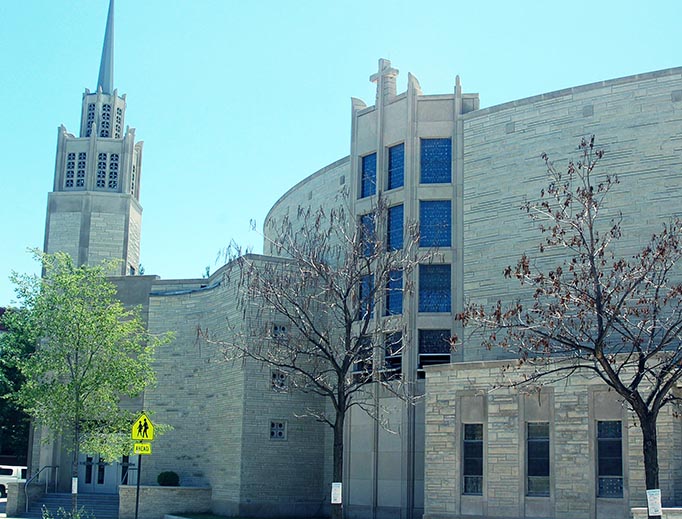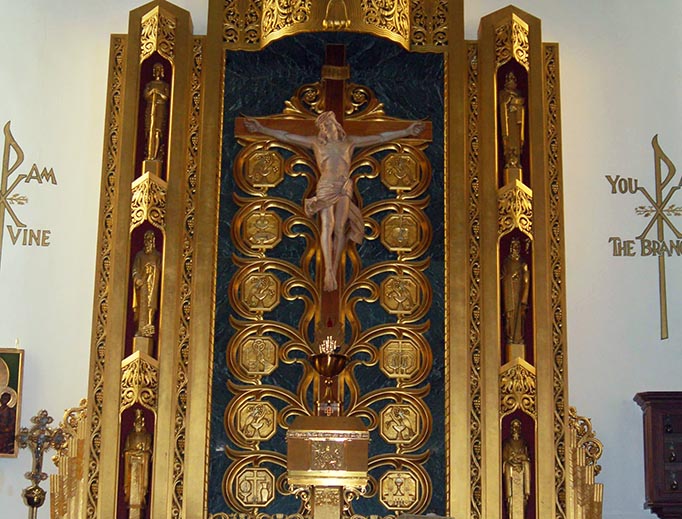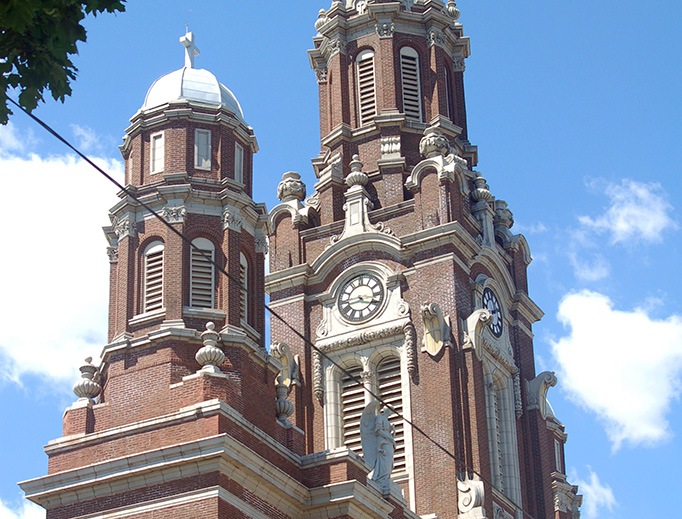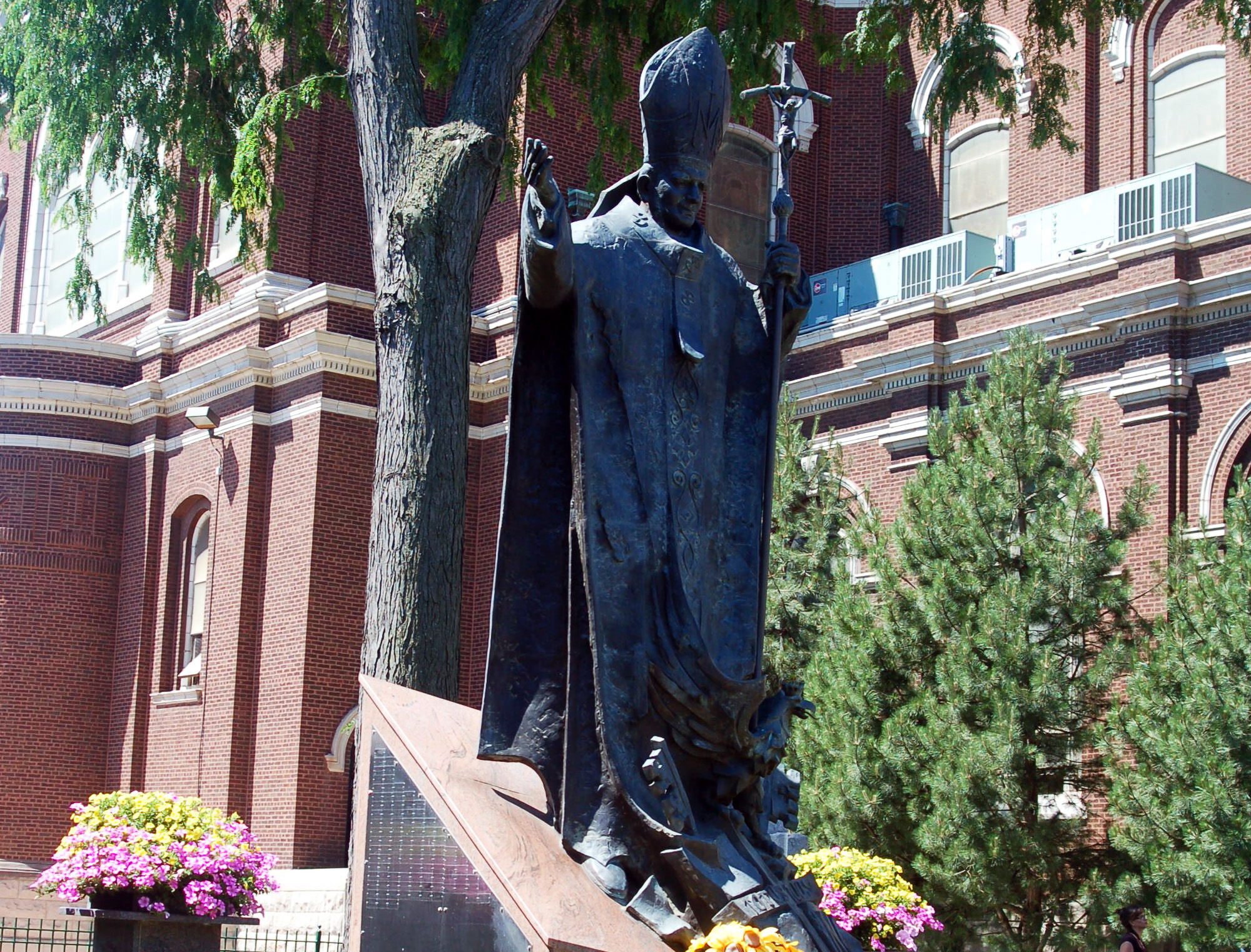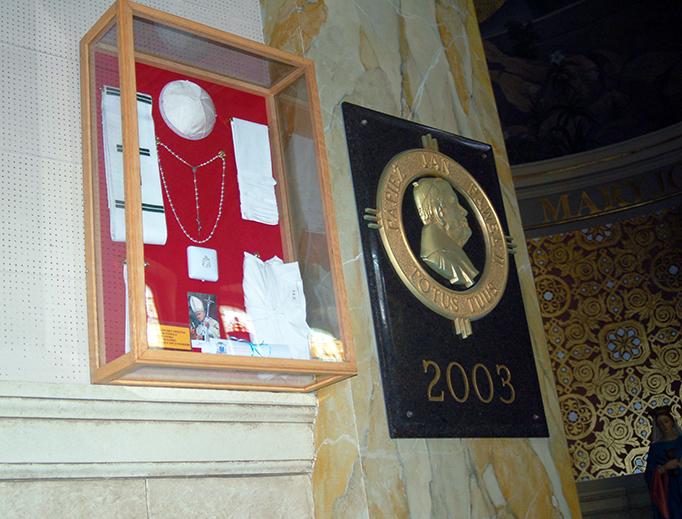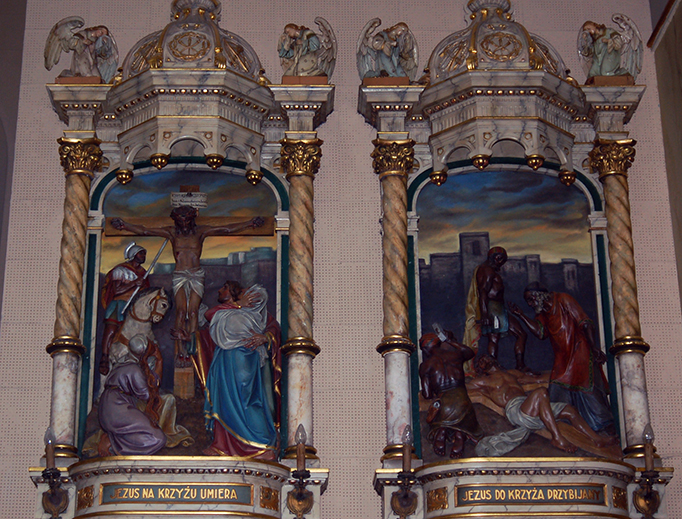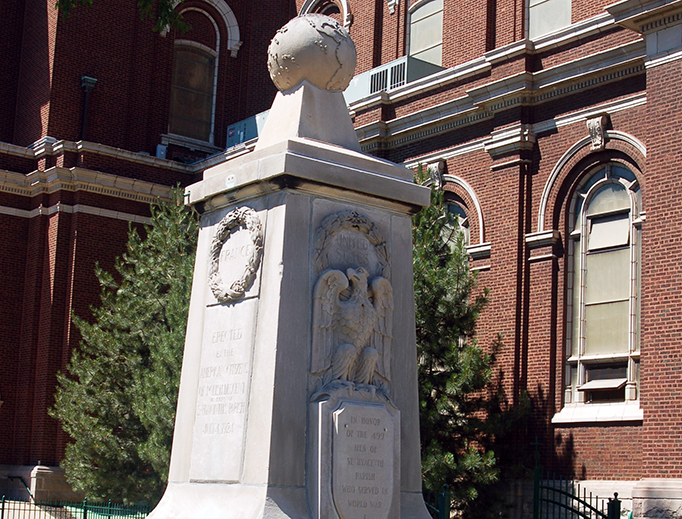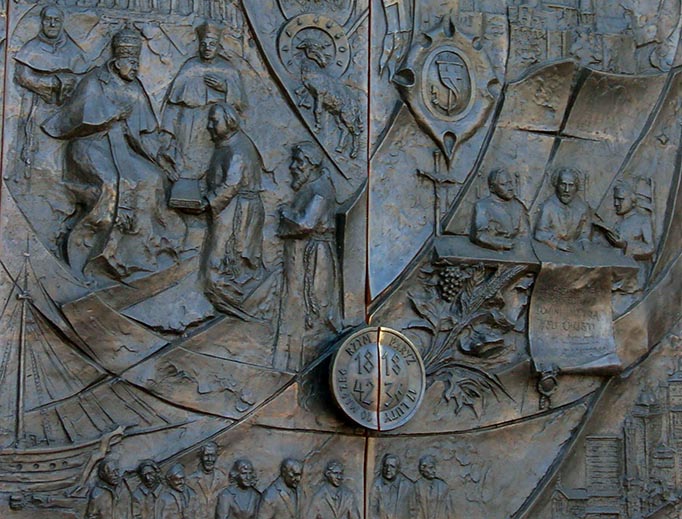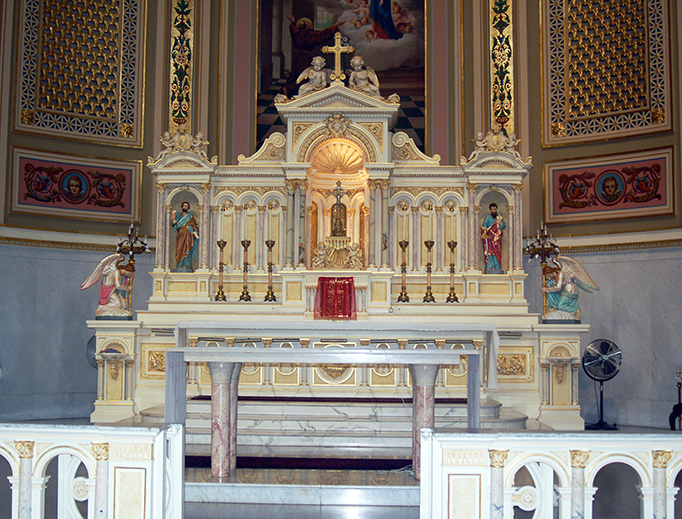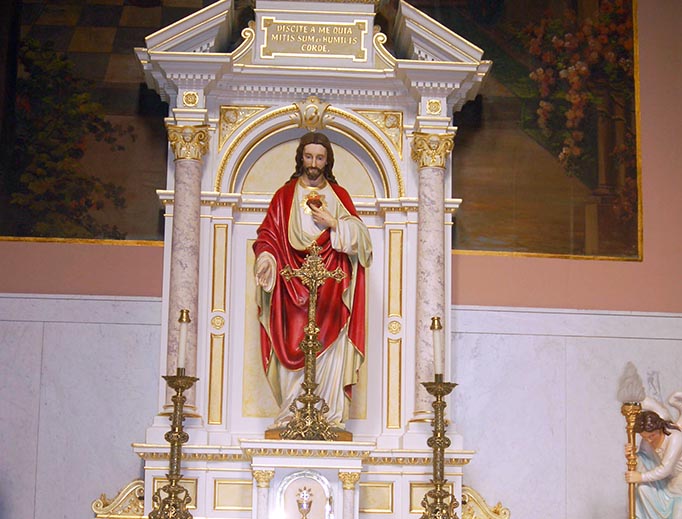Chicago’s Classic Churches are ‘Poetry in Concrete’
Chicago is home to 365 Catholic churches, with many serving as hubs for various ethnic communities.

If you like to visit beautiful old Catholic churches, next time you’re in Chicago take a tour with Nell Andrzejewski, director of Catholic Church Tours (www.CatholicChurchTours.com). Nell is a graduate of St. Thomas More College in New Hampshire, and has a special interest in art and architecture. She got the idea of starting the tour company while studying in Rome; early in the morning she’d see pilgrims headed to the city’s magnificent churches and she started to join them.
The purpose of her tours, she said, is not to make money, but “to help visitors have a better understanding of the Catholic Church and its rich liturgical and artistic heritage.”
Chicago is home to 365 Catholic churches, with parish churches serving as a hub for different ethnic communities. While the ethnic communities change over time, the historic churches endure. Each element of a church has something to teach us, Nell told us. She said, “Churches are poetry in concrete.”
On my group tour with Nell, we started at the iconic St. Mary of the Angels (http://www.sma-church.org/), a Polish parish established in 1897. It’s one of the region’s largest churches, seating 2,000. Features include a majestic entrance portico, nine-foot angels that surround the domed church and a vast collection of beautiful artwork inside. If you’re a Steven Seagal fan, St. Mary’s served as the backdrop for his 1988 movie Above the Law. It’s a prominent feature when you drive down the Kennedy Expressway.
It’s built in the Italian Romanesque style, modeled after a church near Rome. Everywhere you look inside is a feast for the eyes, with colorful paintings, statues and stained glass windows. The interior of the central dome declares “Glory to God in the Highest and Peace on Earth to Men of Good Will,” with stained glass windows of the Twelve Apostles above.
Another place we had a chance to visit was Holy Name Cathedral (http://holynamecathedral.org/), located just a few blocks from Michigan Avenue in downtown Chicago. This is a popular tour destination due to its central location and multiple daily Masses. When you visit, make sure to look up at its magnificent wooden ceiling, highlighted with gold leaf, recently repaired and restored. It dates to the 19th century and is built in the Gothic revival style.
Nell took us to the working-class neighborhood of Avondale to see one of the City’s three basilicas, St. Hyacinth (http://sthyacinthbasilica.org/). It was founded in 1894; exterior features include a soaring three-tower façade, decorative bronze doors (added in 2005) and a statue of Pope John Paul II along the side of the church. He visited the basilica in the 1970s before becoming pope, and due to the Polish character of the parish, is specially honored there. The grounds also have a memorial dedicated to Jerzy Popieluszko, a priest murdered by the communist secret police in 1984, and a World War I memorial.
The interior of the church is especially impressive. The central dome features an image of the Holy Spirit in a stained glass window surrounded by mural of 150 prominent saints, clergy—including Pope John Paul II—and laity. Look for the gold bell to the right, and the red and yellow umbrella to the left, indications that it is a basilica.
Other features include an ornate main altar, side altars, double balconies, altar rails, a raised ambo and magnificent paintings throughout. The stained glass windows include images of the resurrection and the birth of Jesus. Many statues and images of the saints are throughout the church; look for St. Hyacinth’s image hanging above the main altar. The basilica is home to 35 relics of different saints, and it also has a collection of memorabilia of Pope St. John Paul II.
The other two basilicas, or pilgrimage sites, in the city are Our Lady of Sorrows and Queen of All Saints. Nell said, “Although all are basilicas, visitors to all three are surprised to see how each one is entirely different, although built on the same liturgical standards of priority.”
Chicago has no shortage of Catholic shrines, including a new Mother Cabrini shrine in Lincoln Park, a wealthy area of Chicago. Mother Cabrini, who died 100 years ago, once worked on the very spot where her shrine is located. Her community, the Missionary Sisters of the Sacred Heart of Jesus, operates the shrine. It was once the chapel for Columbus Hospital, which closed in 2001 and was replaced by luxury condos. Its interior has beautiful marble, colorful stained glass and a pipe organ.
Nell noted, “Mother Cabrini was a real powerhouse of a woman. Her motto was ‘I can do all things in Christ who strengthens me [Philippians 4:13]’; she could do incredible things despite her weaknesses.”
Other saint shrines Nell regularly visits include St. Anne (in Our Lady of Fatima Church), St. Jude, Our Lady of Pompeii, St. Thérèse of Lisieux, St. Peregrine (in Our Lady of Sorrows Basilica) and the Sanctuary of the Divine Mercy (in St. Stanislaus Church).
St. Helen’s Church (http://sthelenparish.net/en/index.htm) in Ukrainian Village, built in 1965, is a modern church also worth a visit. Much of its interior is beautiful marble with a “royal and regal” motif. Quality materials were used in the construction of the church; the pews, for example, are of a well-crafted walnut.
Its altar retablo features the tree of life, including images of grapes and wheat. A large crucifix and tabernacle are front and center. Along the ceiling are 12 heraldic shields of the Apostles. The stained glass windows are not representational but multi-colored, however, they are well ordered, symmetrical and make use of the primary colors. There are only four statues, but each is well done with multi-colored marble.
